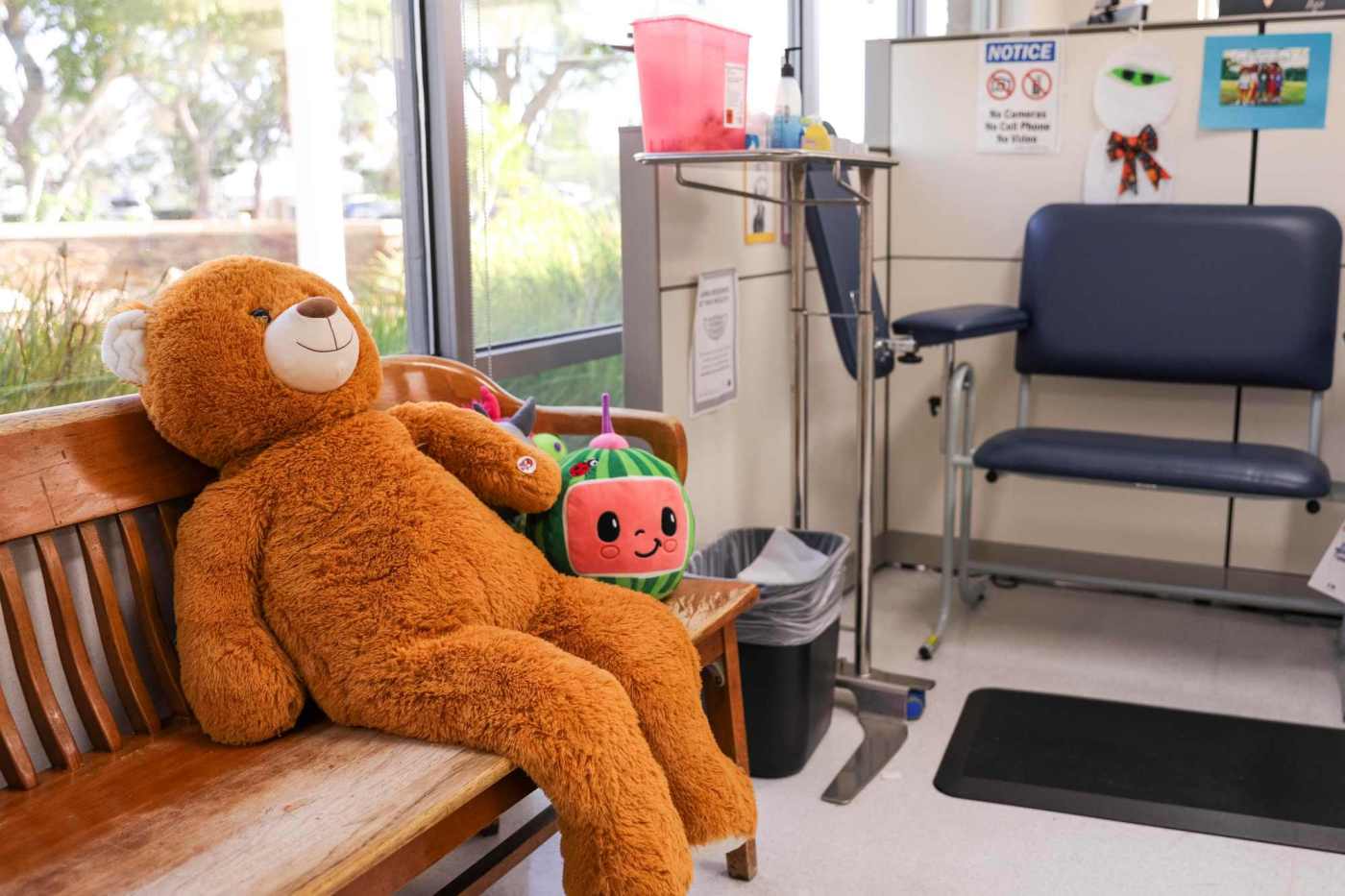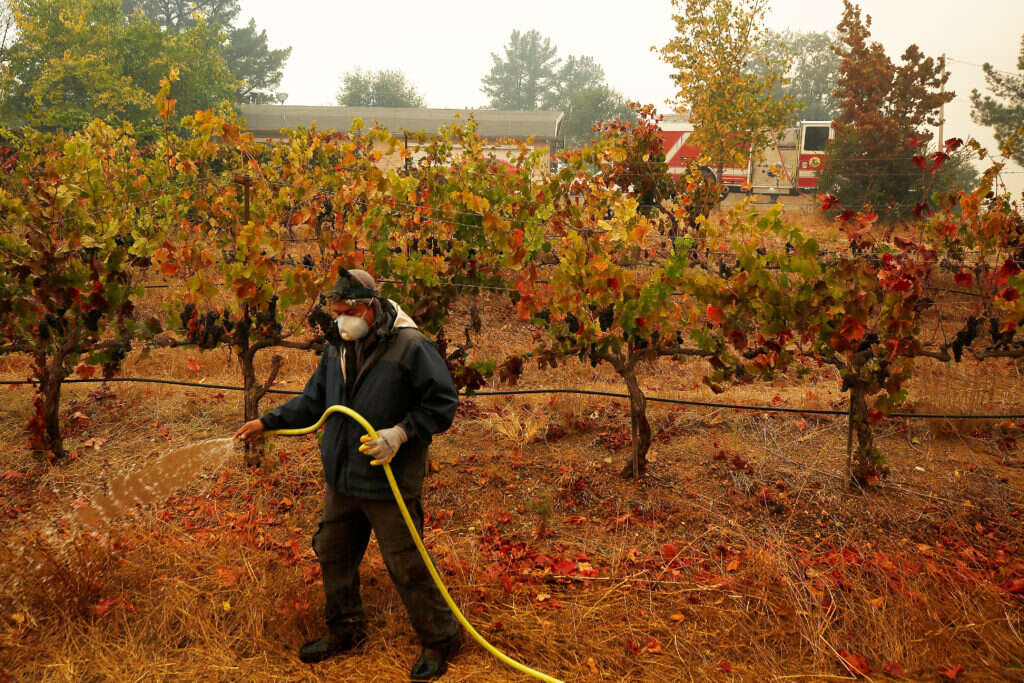Fewer San Diego County kindergarteners are getting their state-required childhood vaccinations each year, and their measles immunization rate places the county below herd immunity levels, county data for the last school year shows.
Childhood vaccination rates have received heightened attention in recent months, as the country grapples with its highest level of measles cases in 33 years, with total U.S. cases already up fivefold from last year.
Related Articles
During cold and flu season, the youngest kids really are the germiest
COVID-19 vaccines may help some cancer patients fight tumors
How leaders of the MAHA movement benefit from anti-science advocacy and promise profits to industry
Wave of anti-science bills pushed by Robert F. Kennedy Jr. allies hits statehouses, endangering health protections
California mpox cases raise concerns. But health officials say the risk remains low
Meanwhile, public health professionals say they worry that the Trump administration — in particular Health Secretary Robert F. Kennedy Jr. — is sowing confusion and skepticism about vaccines. Among other efforts that would hinder access to them, his agency has recently suggested new obstacles for the childhood measles, mumps and rubella vaccine half a century after it came into widespread use.
Kindergarteners’ vaccination rates nationwide have gradually declined since the start of the COVID-19 pandemic, which fueled an increase in vaccine skepticism and deepened partisan divides over vaccines.
The vast majority of parents, about 90%, still believe it’s important for children to be vaccinated against measles, mumps, rubella and polio, according to a KFF/The Washington Post survey conducted this summer. Those immunizations are among the six that California children are supposed to get.
But when it comes to the flu and COVID-19, which are not required childhood vaccines, smaller percentages of parents say the same — 56% and 43%, respectively.
Last school year, only 91.5% of San Diego County kindergarteners were up to date on all required childhood vaccines — down from 93.4% in the 2022-2023 school year, county data shows.
The percentage of county kindergarteners who are vaccinated against measles, mumps and rubella has slipped from 95.3% in 2022-2023 to 93.7% last school year — below the 95% herd immunity threshold.
San Diego County has tended to lag just behind the statewide average for kindergartener immunization rates. In 2023-24, the latest year for which state data has been published, 92.7% of county kindergarteners were up to date on all of their vaccines, compared with 93.7% of kindergarteners statewide.
In San Diego County last school year, about one-fifth of schools and child cares — or 287 — had student vaccination rates below 95% in at least one grade level. California schools must report immunization rates for child care, kindergarten and seventh grade students.
In addition, 18 private and public schools in the county reported that none of their students were up to date on required vaccines. An additional 76 schools and child care centers reported an 80% student immunization rate or lower.
Even if the vast majority of children countywide are vaccinated, such clusters of unvaccinated kids present outbreak risks, experts said.
“Particularly in measles, which is just so highly contagious, it has to do with not just the overall (vaccination) coverage number but the clustering of susceptibles. That’s how you can get an outbreak,” said Dr. William Moss, executive director of the International Vaccine Access Center at the Johns Hopkins Bloomberg School of Public Health.
Joan Aquitania gives Shubham Takor of San Diego a vaccine at the North Central Public Health Center on Friday, Oct. 24, 2025 in San Diego. (Meg McLaughlin / The San Diego Union-Tribune)
Measles has flourished in under-vaccinated communities, like it did in rural west Texas, where public health officials say one outbreak was concentrated in a Mennonite community with low vaccination rates. The outbreak saw 762 measles cases, 99 hospitalizations and two deaths, both of unvaccinated children.
California has higher childhood vaccination rates than most of the country, largely because of its stricter vaccination laws. California is one of a few states that do not allow personal belief exemptions for school immunizations, and it requires immunizations for students attending both public and private schools.
But there is one major gap in the law: Students don’t have to get immunized if they attend a private home school or an independent study school that does not offer classroom-based instruction.
Although such schools are called non-classroom-based, many still offer or facilitate in-person instruction and other educational or social activities, leaving students at risk if some aren’t vaccinated.
California defines non-classroom-based schools as schools where at least 20% of the instruction happens outside a typical classroom learning model.
That includes hybrid schools where students attend classes in-person one to four days a week, as well as independent study schools where students come in to learning centers to take occasional classes and meet with students and teachers to study. It also includes home schools where students learn at home but also attend part-time classes, field trips and recreational activities offer by vendors.
Many of the San Diego County schools with low immunization rates are online or independent study schools, hybrid schools, private home-based schools or learning centers that provide classes, extracurriculars and other activities for home-schooling children.
Many other schools with low immunization rates are private and public child care centers, or traditional private or religious in-person schools. Some others are special education schools — state law says students with a special education plan cannot be barred from accessing their services based on their vaccination status. And some of the low-immunization schools are single-family home schools.
Even if children are not going to an in-person school, it’s still important for them to get immunized for the sake of public health, experts said. It’s also important if they, for example, have younger siblings who aren’t old enough to get vaccinated, but are vulnerable to the disease.
“They’re not going to interact much in their schooling life, but certainly they live in communities,” said Jen Kates, senior vice president at health policy organization KFF. “Vaccines are very, very safe and effective and really can help those individual kids — but also contribute to the larger herd immunity of the community.”
A sign is seen inside an area where patients are given vaccines at the North Central Public Health Center on Friday, Oct. 24, 2025 in San Diego, California. (Meg McLaughlin / The San Diego Union-Tribune)
In San Diego County, some of the schools and child cares with immunization rates of 80% or lower were non-classroom-based schools that said families had chosen not to vaccinate their children for personal reasons.
“We recognize that families may choose to delay or decline certain vaccinations for a variety of personal, medical or philosophical reasons,” said Terri Novacek, executive director at the hybrid Dimensions Collaborative charter school.
At Dimensions, a third of kindergarteners and 29% of seventh-graders are not up to date on required vaccines. Novacek said the school’s hybrid model “allows us to uphold state requirements while remaining inclusive and responsive to the needs of our families.”
Motivated Youth Academy, an independent study charter school, also said its families are not immunized because of personal beliefs or medical exemptions; 45% of the school’s seventh-graders are not up to date on required vaccines.
Renee Olmeda, a spokesperson for Learning Choice Academy charter schools, said students don’t have to provide immunization records if they enroll in the Learning Choice’s home-schooling program — but they must if they enroll in its hybrid program. Across both programs overall, between 26% and 53% of Learning Choice’s kindergarteners at its three schools are not up to date on required vaccines.
At Reformation Lutheran School, where 46% of kindergarteners were reported as not up to date, Superintendent Rachel Rodrigues said it reminded those students to get vaccinated until they eventually did.
But she said those belated immunizations don’t show up in the school’s data, because they happened after the school reported its data to the state last December.
“We find that a simple notification is all that is needed to help meet the milestone requirements,” she said.
Kates and Moss reiterated that vaccines are very safe and effective. They noted that “effectiveness” doesn’t necessarily mean preventing illness entirely but it does mean preventing severe or life-threatening illness.
“Vaccines are … so successful that the number of kids that get sick and die from vaccine-preventable diseases is much smaller than it ever was, or much smaller than it used to be,” Kates said.
For those who are unsure about vaccines, Kates and Moss recommend they consult their own healthcare provider, doctor or pediatrician, as well as the American Academy of Pediatrics. Moss also recommends consulting the California Department of Public Health’s vaccination recommendations.





